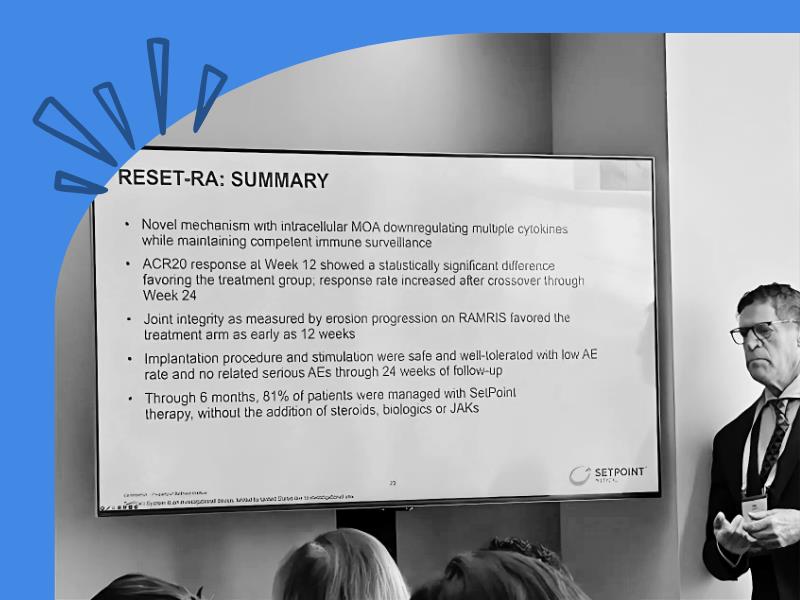Medical Foods for Osteoarthritis
Medical foods are prescription medicines created from food-based, natural molecules. They deliver highly purified, pharmaceutical-grade ingredients to the body to help restore its own balance and normal metabolic processes.
Prescription medical foods contain highly-concentrated and purified natural ingredients such as flavonoids, the healthy nutrients found in foods like green tea, red wine and dark chocolate. Flavonoids are proven to have anti-inflammatory effects and powerful antioxidants; however, a change in diet cannot pack the same powerful punch as one highly-concentrated medical food capsule or tablet.
Medical foods are intended for the metabolic management of a disease and must be used under a doctor’s supervision, according to federal laws.
The following medical foods may help manage the symptoms of osteoarthritis.
Limbrel
Limbrel is a prescription medical food product for the clinical dietary management of the metabolic processes of osteoarthritis to be dispensed under a physician’s supervision.
OA activates an “inflammation cascade” that results in chronic discomfort. Inflammation is a natural way the body heals itself, but it can become unbalanced. Limbrel works with the body to restore its natural balance – reducing physical discomfort with fewer side effects. It does this through dual inhibition, or partially limiting both COX (cyclooxygenase) and LOX (lipoxygenase) enzyme systems. These are two major inflammatory pathways that break down arachidonic acid into inflammatory molecules. Limbrel balances COX-1 and COX-2 metabolism by inhibiting both enzymes relatively equally, in addition to inhibiting 5-LOX. Limbrel is also a potent antioxidant that helps “absorb” free radicals that can cause damage to joints. The antioxidant power of Limbrel is higher than Vitamin C and E, as well as concentrated sources of antioxidants such as blueberry juice.
Limbrel unlocks natural molecules found in foods. It is made up of flavocoxid and citrated zinc bisglycinate. Flavocoxid is a blend of the flavonoids baicalin and catechin, which have been studied around the world and are recognized for their anti-inflammatory and antioxidant properties. Each Limbrel capsule also has approximately 10 mg of elemental zinc. Zinc is an essential mineral required by many enzymes in the body. The National Academy of Sciences recommends a 40 mg/day limit of elemental zinc per day, the equivalent of four Limbrel capsules. Limbrel is also available in a non-zinc formula.
Take 1 capsule every 12 hours with or without food, or as directed by a physician.
Does Limbrel cause side effects?
Limbrel uses a different approach than many drugs because it addresses the dietary imbalances involved in joint disease, rather than focusing only on the symptoms. Safe flavonoid ingredients (found in many foods we eat), unique dual inhibition and antioxidant action are the foundation of Limbrel’s safety and efficacy.
The most common side effects of Limbrel are nausea, diarrhea and flatulence, which are often mild and do not usually require stopping use. If this should happen to you, take Limbrel with food. Clinical experience by physicians has shown Limbrel to be well tolerated in patients with a history of GI issues. Mild elevations in liver tests and rare cases of severe liver reaction (e.g. jaundice) have been reported, and were completely resolved within 2-4 weeks after patients stopped taking Limbrel. Liver abnormalities may be the result of a hypersensitivity to one of the ingredients in Limbrel. Extremely rare cases of allergic lung reactions that required treatments have also been reported. No kidney toxicity has been reported. If you experience any discomfort while taking Limbrel, inform your doctor immediately.
Who should not take Limbrel?
Limbrel is not intended for patients with hypersensitivity to flavonoids or who are allergic to zinc. Flavonoids are a family of healthy ingredients generally found in colored vegetables, fruits, red wine and green tea. Limbrel has not been tested in pregnant or lactating women, pediatric patients, or patients with an active bleeding gastrointestinal ulcer.
Trepadone
Trepadone is a medical food used to manage and relieve pain and inflammation related to joint disorders. It provides the nutrients the brain needs to reduce pain, decrease inflammation and stimulate the production of joint cartilage. It is typically used as part of an overall program to manage osteoarthritis symptoms.
Trepadone contains several non-essential amino acids (L-arginine, L-histadine, L-glutamine, L-serine), GABA, griffonia seed, whey protein, grape seed extract, chondroitin sulfate and glucosamine (which supply the building blocks of cartilage repair) and omega-3-FFA from tuna oil and cocoa, believed to lower inflammation. Low levels of GABA, a neurotransmitter that blocks impulses between nerve cells in the brain, has been linked to chronic pain.
Take two capsules every four hours as needed with water on an empty stomach at least 30 minutes before or after eating. Do not take Trepadone with food. Trepadone can be taken with prescription medicines under a doctor’s supervision.
Does Trepadone cause side effects?
The most common side effects with Trepadone are mild headache, stomach upset, nausea and dry mouth. These symptoms are usually mild and temporary and can be managed by drinking plenty of fluids and lowering the dose.
Who should not take Trepadone?
You should not take Trepadone if you are taking MAO inhibitors.





